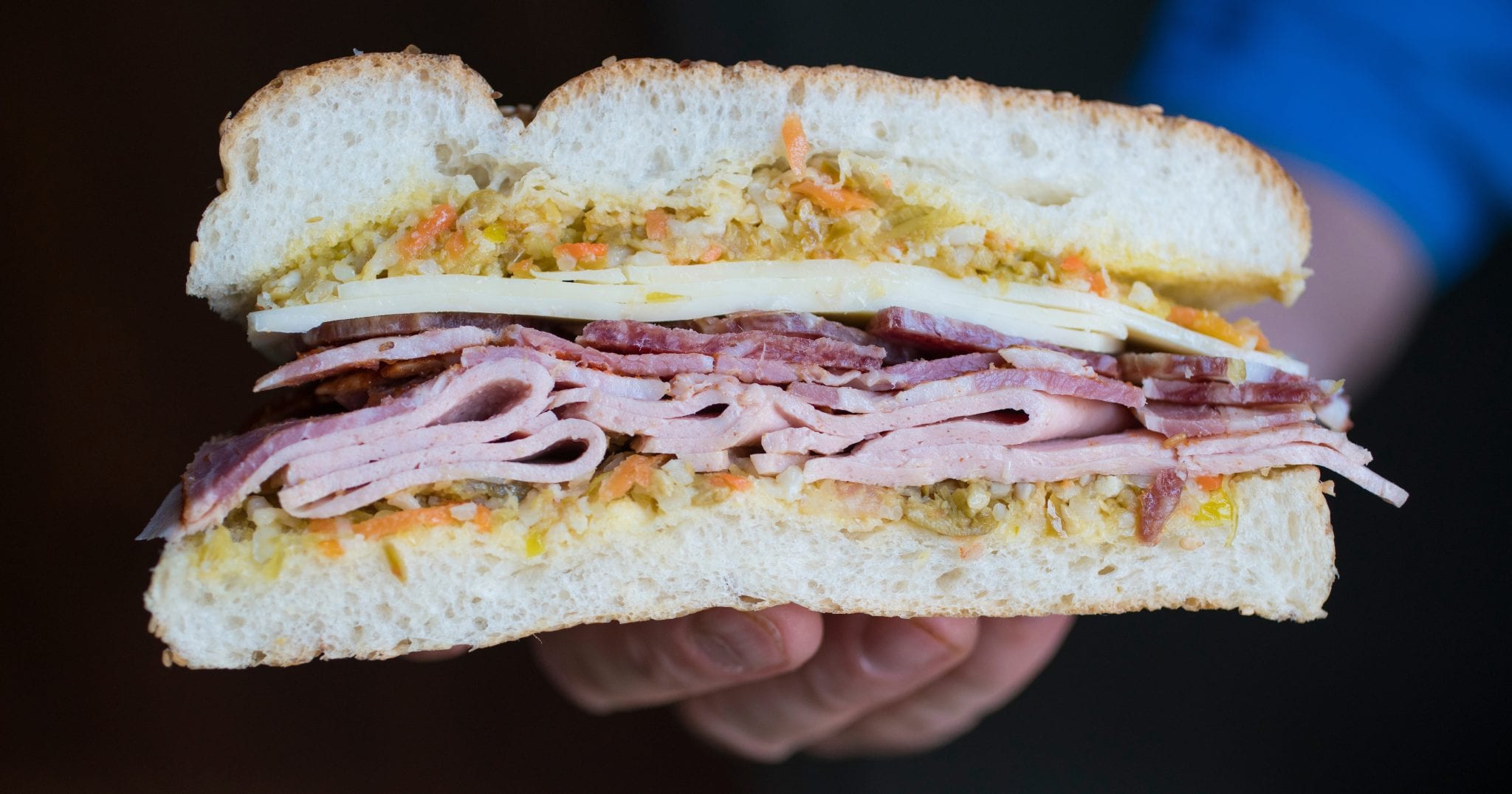Muffuletta
[mə-fə-le-tə]
n: a hearty Italian sandwich invented in New Orleans
Salvatore Lupo was a problem solver. In 1906, the Sicilian immigrant was the proprietor of Central Grocery Co. on Decatur Street in New Orleans’ French Quarter, an area so populated with fellow expats—an estimated 290,000 emigrated to the city between 1884 and 1924—it was often referred to as Little Palermo and the Italian Sector. Day in and day out, he’d watch his countrymen leave his store with trays of cured meats, cheese, olives, and a round loaf of Sicilian bread called muffuletto, then awkwardly balance their lunch on their laps while perched atop barrels and crates. He decided there must be a better way. Bucking the Sicilian tradition of eating the ingredients separately, he sliced the loaf and stuffed it with the antipasto. And so the muffuletta was born.

The sandwich lives on today as one of the city’s most iconic, and can still be ordered from the counter at Central Grocery. It’s a food that captures a fleeting moment in New Orleans history, when new immigrants adapted the traditions of their homeland to the realities of a new world, stamping their story on the city’s cuisine in the process. So when Crescent City chef Donald Link planned to serve one at his meat-market-meets-sandwich-shop Cochon Butcher, which turns ten this year, he knew it had to be good. He wouldn’t bastardize the muffuletta by doing “anything too weird to it,” he says. Instead, he focused on crafting spectacular cured meats. He spent a month testing muffulettas, adjusting the thickness of bread, the ratio of meats, the coarseness and piquancy of the giardiniera. The top seller on Cochon Butcher’s menu—Link says they sell between 700 and 1,000 weekly—the version he settled on has been a hit, to say the least.
share
trending content
-
The Ultimate Georgia Dining Guide
by Lia Picard -
Have the Last Word | Listen
by Tate Jacaruso -
A First Look at Le Moyne | Listen
by Amber Chase -
A Kamayan Filipino Feast | Listen
by Emily Havener -
Corn of Life with Julio Hernadez | Listen
More From Roots
-
Meet a Local: Tank Jackson | Listen
-
Of Rice and Flavor with Nicole Cabrera Mills | Listen
-
ChòpnBlọk: A Journey to Connection
-
Bearing Fruit at Big Apple Inn
-
The Pakalachian Food Truck Blends Traditions | Listen








